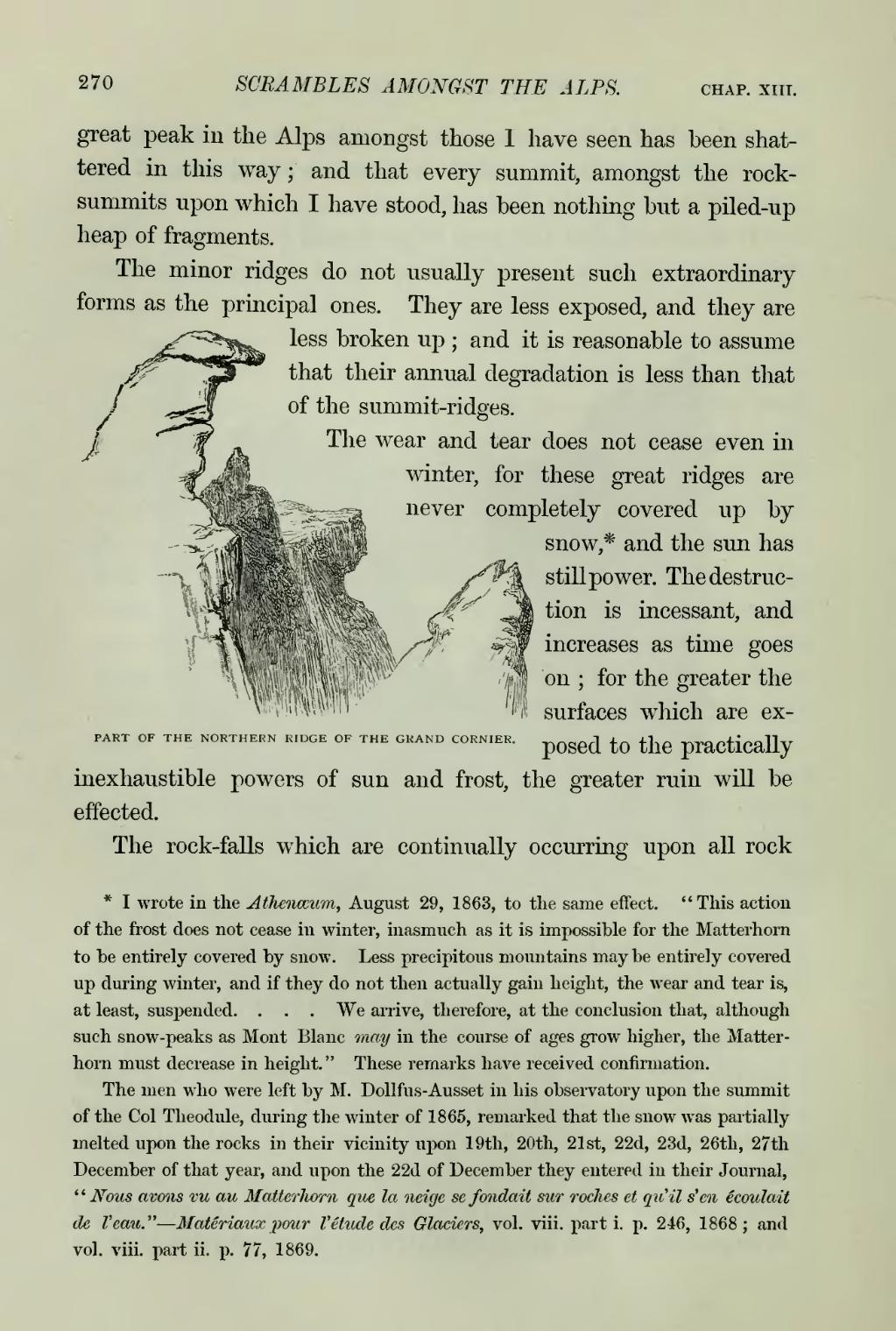great peak in the Alps amongst those I have seen has been shattered in this way; and that every summit, amongst the rock-summits upon which I have stood, has been nothing but a piled-up heap of fragments.
The minor ridges do not usually present such extraordinary 
PART OF THE NORTHERN RIDGE OF THE GRAND CORNIER.forms as the principal ones. They are less exposed, and they are less broken up; and it is reasonable to assume that their annual degradation is less than that of the summit-ridges.
The wear and tear does not cease even in winter, for these great ridges are never completely covered up by snow,[1] and the sun has still power. The destruction is incessant, and increases as time goes on; for the greater the surfaces which are exposed to the practically inexhaustible powers of sun and frost, the greater ruin will be effected.
The rock-falls which are continually occurring upon all rock
- ↑ I wrote in the Athenœum, August 29, 1863, to the same effect. "This action of the frost does not cease in winter, inasmuch as it is impossible for the Matterhorn to be entirely covered by snow. Less precipitous mountains maybe entirely covered up during winter, and if they do not then actually gain height, the wear and tear is, at least, suspended. . . . We arrive, therefore, at the conclusion that, although such snow-peaks as Mont Blanc may in the course of ages grow higher, the Matterhorn must decrease in height. " These remarks have received confirmation.
The men who were left by M. Dollfus-Ausset in his observatory upon the summit of the Col Theodule, during the winter of 1865, remarked that the snow was partially melted upon the rocks in their vicinity upon 19th, 20th, 21st, 22d, 23d, 26th, 27th December of that year, and upon the 22d of December they entered in their Journal, "Nous avons vu au Matterhorn que la neige se fondait sur roches et qu'il s'en écoulait de l'eau"—Matériaux pour l'étude des Glaciers, vol. viii. part i., p. 246, 1868; and vol. viii. part ii. p. 77, 1869.
